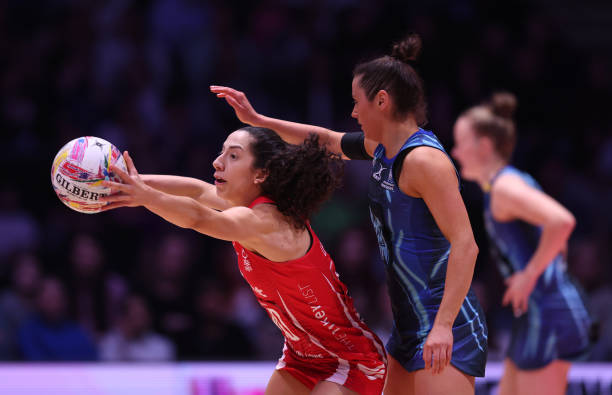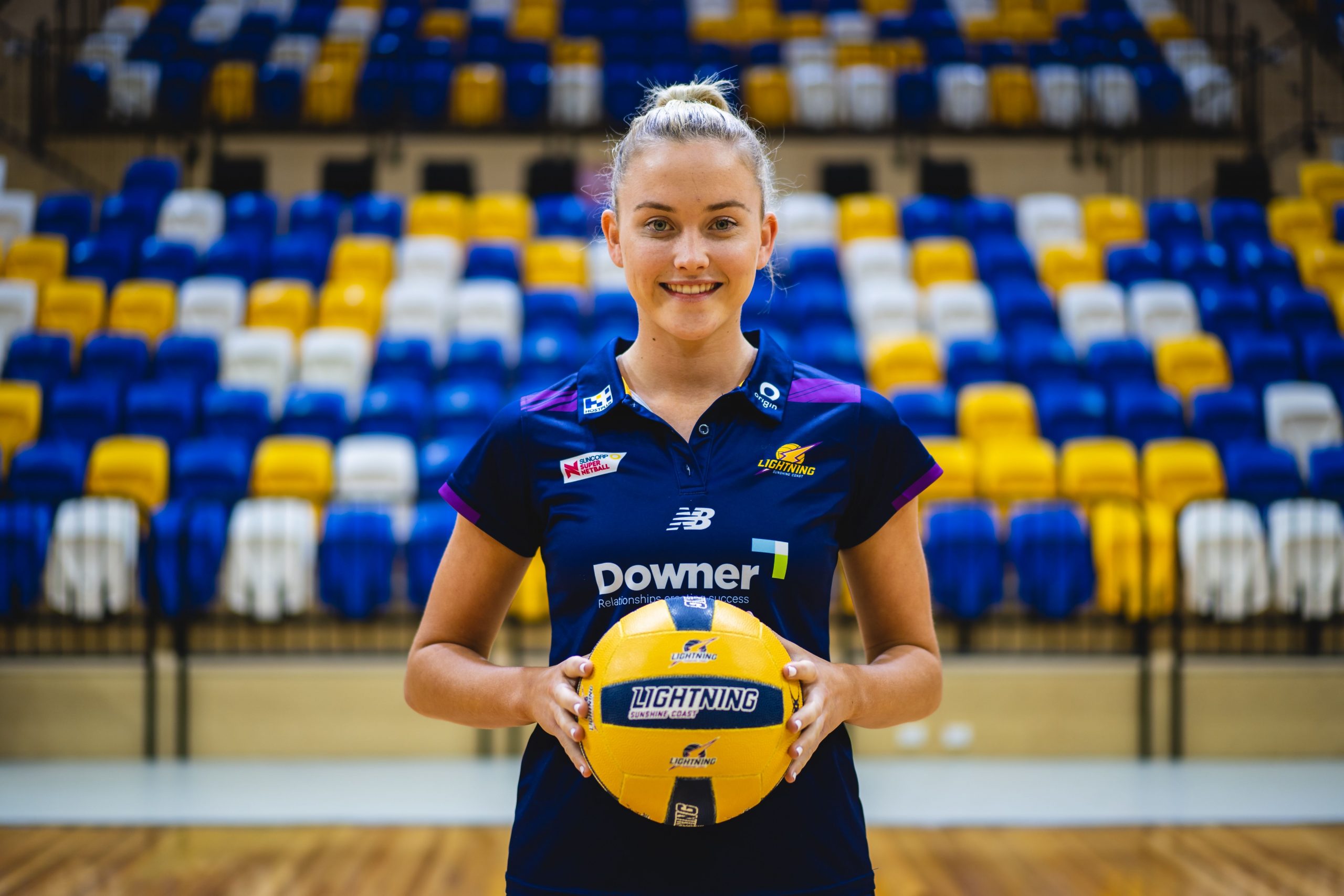Is umpire inconsistency causing headaches at international level?

UMPIRING standards in netball have been brought to the forefront of media contention over the last few weeks, not for the first time in 2019 – and with the standard of the sport itself growing every year, it is clear why.
With so much questioned regarding fairness in sports these days, whether it be from media outlets, fans or players themselves it only seems appropriate that those officiating the sport deal with much of the slack. What many seem to forget is that where human officiation is necessary, human error can occur. And what we are starting to see in netball is that when this error occurs, many are beginning to openly question the ability and bias of an umpire towards the match in question.
With the use of a Victorian-based umpiring Facebook group, Twitter and the website SurveyMonkey, throughout October I conducted an online survey entitled ‘International Umpire Standards’, enquiring into the anonymous opinions of predominantly Australian umpires on the quality of umpiring standards over the past year and specifically focusing on the standards of Australia’s premier netball competition, Suncorp Super Netball, the 2019 Netball World Cup and the 2019 Constellation Cup between Australia and New Zealand.
The intention of this survey was to find out the current general consensus of umpires across a range of badges from around the state and open dialogue surrounding umpiring standards. Additionally, I wanted to find out their opinions regarding these competitions and how the umpiring standards compared, as well as how these applicants think the quality of umpiring can improve. Furthermore, it looked into the pros and cons of hypothetical rule changes that could improve accuracy, namely the most contentious suggestions being thrown around across the media – the addition of an extra umpire, the adaptation of umpiring zones on court and umpire review panels.
In Australia there is a clear and concise structure for umpiring accreditation, with letter grades or ‘badges’ used to differentiate levels. The lowest badge is ‘C’, with umpires needing to reach a certain understanding of the rules and practical application to progress further to ‘B’, ‘A’ and All Australian (AA). Following AA is the highest on-court umpiring accomplishment, the International Umpires Award (IUA).
At the time of writing there were 89 applicants, with a majority being ‘C’ and ‘B’ badged umpires combining for almost 75 per cent of results. ‘A’ badge sat at five applicants and ‘AA’ at one, while 16 were unbadged and one applicant chose to opt out of specifying.
Adding an extra umpire seems to be both the most suggested and scrutinised of the proposed rule changes, with a whopping 64 per cent of those surveyed disagreeing with the suggestion of an additional umpire on/around a netball court.
For many, it seems the size of the court itself only warrants two umpires, while others stated that there is enough inconsistency between two umpires that adding a third would not help the case. A number of applicants suggested that a third umpire would blur the boundaries of umpire zones further, negatively impacting the match and not adding any value to the calls already being made.
However, almost 60 per cent of applicants agreed with the question ‘do you think there is a way umpiring can be improved to be more accurate?’, with better training and pathway standards at grassroots one of the most common suggestions, while many suggest that further professionalism of umpires is required to achieve higher standards.
One of the more noticeable results on the survey regarded the quality of officiation in the Netball World Cup and Constellation Cup – both competitions where countries were unable to have umpires on court from their respective nations. While this is not a major issue for many countries, it does seem to play a significant role in how matches between higher ranking nations play out.
The Netball World Cup and Constellation Cup this year have been some of the more heavily criticised competitions in recent memory. The World Cup saw umpires from across the globe cover matches across two weeks of competition, unable to umpire their home nation in the process and ultimately seeing countries like Australia, New Zealand and England suffer for it with penalty counts well above the norm for their level. Similarly, lower-ranked nations found themselves struggling under the pressure of higher level umpires than they were used to, especially when attempting to match top sides, collecting warnings and cautions left, right and centre, unable to compete. For the Netball World Cup portion of the survey the results varied, with over 50 per cent stating the quality of umpiring met expectations, though many commented that matches umpired by lower ranked nations were of a lower quality than those from leading countries.
The key finding of the survey results saw over 55 per cent of applicants elect ‘below expectations’ for the Constellation Cup, which saw four test matches played between Australia and New Zealand across a period of three weeks. With Australian and New Zealand umpires unable to take the court for fear of bias, the four matches saw what many perceived as questionable calls and interpretations of rules, while others complained of ‘over-umpiring’. There were many questions about the interpretation of rules and overall standard of play left after calls were made so frequently during the Constellation Cup, with Silver Ferns coach, Noeline Taurua speaking out about the umpiring quality when the Ferns collected 66 penalties in the final match after picking up an average of 42 across the first three matches.
For comparison, 31 per cent of umpires said that Suncorp Super Netball exceeded expectations, while a further 64 per cent stated that it met their expectations, suggesting that the high quality and consistency of Australian umpires is something that has come to be expected and relished in netball.
Like any sport, consistency across accreditation can differ depending on the association, local standard and umpire supervision. However, with premier netball competitions in Australia such as the Australian Netball League (ANL) and its statewide feeder competitions, umpires are given as much an opportunity as players to progress their skills thanks to the match standard and umpire supervision across the country. While badging is one of the key ways to maintain relative consistency across the country and indeed the world, many other countries do not necessarily have the same standards in place, though the same final outcome is awarded – IUA – for jumping the final hurdle.
Australia, New Zealand, and to an extent England, currently lead the sport in umpiring and umpire development, with all three countries having high quality officiators due to the equally high quality of players and teams taking the court. What seems to be the most contested issue at this time is that, similar to how graded umpires can differ from association to association, umpires of the same international accreditation can differ thanks to their country of origin and standard of competition. Therefore meaning countries with a high standard of domestic competition such as those aforementioned tend to have higher quality umpires than a number of other netball-competing countries.
While every game or indeed, umpire, may have its faults, the umpires from these leading countries tend to form the highest standard thanks to the quality of netball they have available to officiate week in and week out. However with this standard comes a different issue, with lower-ranked countries and their equally badged counterparts not always able to keep up with the quality many spectators and players have come to expect.
The main problems that seem to pop up during international competitions are a) the standards of international umpires, and b) the perceived bias of national/domestic umpires, disallowing them from umpiring their own country – and therefore robbing the country’s representative teams from reaping the rewards of the best umpires available.
At the end of the day, umpires are on the court to ensure a safe and fair game is played for all involved, and not intended to change a game’s outcomes with their decision making – or as we have come to see in netball, often lack thereof.
While this commentary – and indeed the survey conducted – offers plenty of questions and suggestions to improve the quality of umpiring, something begs the question; is it possible for umpiring to be improved to be at a standard spectators, players and umpires alike can agree on? When does match fairness become a question of an umpire’s ability rather than simple human error? Only time will tell.
Finally, in the wise words of one of my own umpire supervisors, ‘just let them play!’









I’m sorry but this is a completely ridiculous survey. To ask a C badge umpire to comment on the quality of a AA or International umpire is completely inappropriate. C badge umpires have barely begun their journey and often are still learning to interpret the rules – especially the difference between contact and contest.
Umpiring is a hard job and as humans, they will make mistakes. What if we publicly shamed players every time they fumbled a ball or missed a shot.
Our umpires need our support, not our criticism.
If we have to have umpires from other countries umpuiring the top four then get them to Australia, NZ and England each season
Knowing the standard of International Umpires from NZ and Oz I’m still astounded that are NOT able to umpire their own countries. Constellation Cup could of had 1 from each country for the court and equal split for the officials. Top umpires are NOT biased otherwise they would not have their badges. Bring in trust and allocate the best umpires for the the best teams!!!
I’m not sure that having refs umpire their own countries would work as it hasn’t in the past and has lead to this state of affairs. It was changed for a reason as with the other the other common sports, such as cricket and rugby. Perceived bias and actual bias were very often the same opinions from many administrators and officials. There are highly qualified netball refs in NZ that have been very critical of Aussie refs in their national league and I would assume the reverse is the same. Without a doubt there is a difference in how reffing is regarded in NZ, AUS and the rest of the nations and until interpretations are standardised objectively, nothing will change.
Does the INF run camps for IUA umpires? If not, this could be a starting point for everyone to be on the same page. As we all know, its one thing to know the rules but how we apply them takes time and practice.